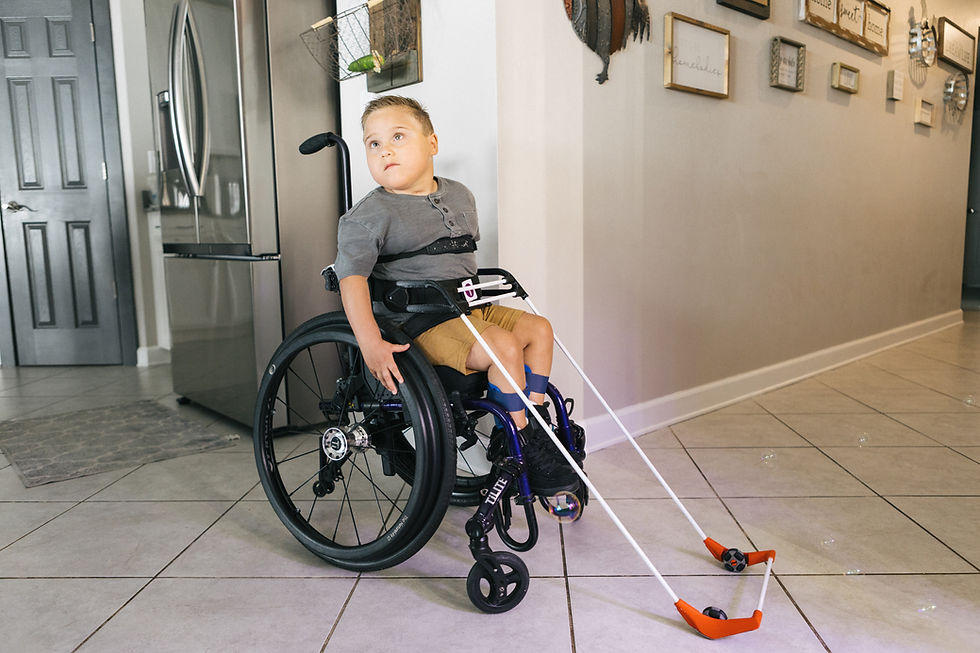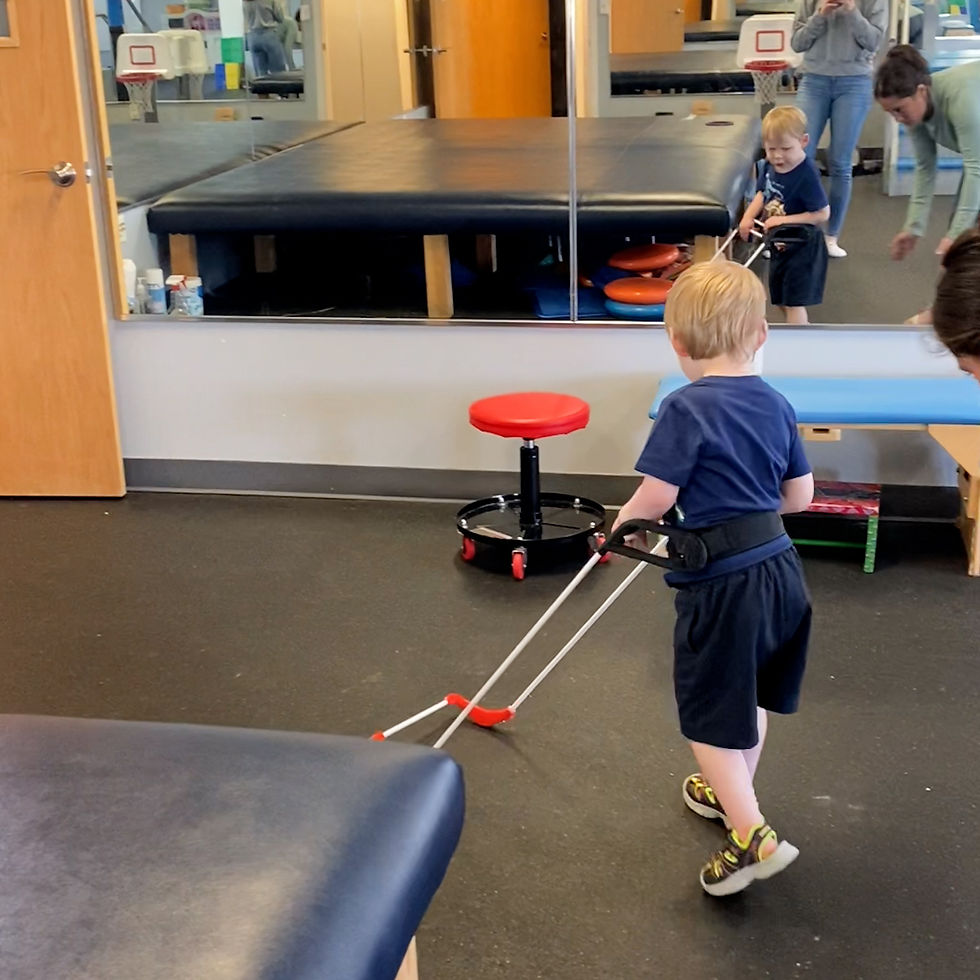Top Mobility Solutions for Children with Visual and Motor Impairments
- Grace Ambrose-Zaken

- Aug 5
- 5 min read
When it comes to helping children with mobility challenges due to visual and motor impairments, finding the right tools can make all the difference. Mobility aids are not just devices; they are gateways to independence, confidence, and joy. Imagine a child who once struggled to move freely now exploring the world with ease. That’s the power of the right children mobility aids. In this post, I’ll walk you through some of the top solutions available today, share practical tips, and answer common questions. Ready to dive in? Let’s go!
Understanding Children Mobility and Safety Aids: What Works Best?
Children mobility aids for motor impairments come in many shapes and sizes. From walkers and wheelchairs to specialized scooters and orthotic devices, the options can feel overwhelming. But here’s the key: the best aid is the one that fits the child’s unique needs, lifestyle, and personality.
Types of children mobility aids for motor impairments include:
Manual wheelchairs: Lightweight and easy to maneuver, perfect for kids who have some upper body strength.
Powered wheelchairs: Great for children who need more assistance with movement.
Walkers and gait trainers: Help children who are learning to walk or need extra support.
Orthotic devices: Braces and supports that improve walking ability.
Adaptive strollers: For younger children who need mobility support but aren’t ready for wheelchairs.
There are only three types of assistive safety aids for children with a visual impairment. The long cane, the rectangular cane and the belt cane. The key: the best aid is the one that fits the child’s unique needs, lifestyle, and personality.
Types of children assistive safety devices for visual impairments include:
Long Canes: Lightweight, these canes require the constant use of one hand and to operate the child creates the cane arc by swinging back and forth.
Rectangular Canes: Lightweight, these canes have a static cane arc that requires the constant use of two hands and to operate by pushing forward.
Wearable Canes: Lightweight, the belt helps the child maintain the position the static cane arc requiring minimal use of one hand to operate.
Each device serves the same purpose providing a protective cane arc, the difference is in operating the device. For example, the long cane requires coordination and skill to swing the cane tip back and forth in rhythm with each step. Meanwhile, the shape of rectangular cane means the child need only push it forward, but often requires both hands to control it. The belt cane has the shape of the rectangular cane and the belt helps to keep it correctly positioned.
Choosing the right aid means considering the child’s age, physical condition, and daily activities. Don’t hesitate to consult with therapists and specialists. They can recommend the best fit and even customize devices.

How to Choose the Right Children Mobility Aids for Your Child
Choosing children mobility and safety aids is a journey, not a one-time decision. You want something that grows with your child and adapts to their changing needs. Here’s how to approach it:
Assess the child’s mobility level: Can they walk with support? Do they need full assistance? This helps narrow down options.
Assess the child's cognition: Can the child communicate and understand the complicated sequence needed to operate a long cane? Do they need the easier rectangular design?
Look for comfort and safety features: Padded seats, adjustable handles, and secure straps matter.
Involve the child: Their preferences count. A device that looks fun or cool can boost motivation.
Observe the outcome: The child's safety device needs to be consistently in the right place at the right time to provide essential tactile feedback and protection needed to compensate for missing or impaired visual information.
Remember, the goal is to empower the child, not limit them. Mobility and safety aids should open doors, not close them.
If you want to explore a trusted resource for the Pediatric Belt Cane, check out pediatric mobility aids. Safe Toddles offers a the only assistive safety device designed specifically for children’s needs.

Can You Get Mobility Aids for Free?
This is a question I hear often. The good news is - yes, in many cases, you can get mobility aids at little or no cost. But it depends on several factors like insurance, government programs, and charitable organizations.
Here are some avenues to explore:
Medicaid and Medicare: These programs sometimes cover mobility aids for eligible children. Coverage varies by state.
Private insurance: Many plans cover mobility devices, but you’ll need prior authorization.
Nonprofit organizations: Groups like Lions Clubs and United Cerebral Palsy offer grants or loan programs.
School programs: Under the Individuals with Disabilities Education Act (IDEA), schools may provide mobility and safety aids as Assistive Technology defined special education services. IDEA "Sec. 300.34 (c) (7) Orientation and mobility services (B) To use ...a tool for safely negotiating the environment for children with no available travel vision..."
Local government assistance: Some states have programs to help families access medical equipment.
The process can be complex, so start by talking to your child’s healthcare provider or a social worker. They can guide you through paperwork and referrals.
Don’t give up if the first try doesn’t work. Persistence pays off when it comes to securing the right support.

Tips for Supporting Your Child’s Mobility Journey
Mobility aids are tools, but your support is the engine that drives progress. Here are some practical tips to help your child thrive:
Encourage practice: Regular use builds strength and confidence.
Create safe spaces: Clear clutter and provide smooth surfaces for easier movement.
Celebrate milestones: Every step or roll forward is a victory.
Stay patient: Learning new skills takes time.
Connect with communities: Support groups and online forums can offer advice and encouragement.
Maintain equipment: Regular checks and adjustments keep aids safe and comfortable.
Remember, mobility is about more than just moving. It’s about exploring, learning, and growing. Your encouragement makes all the difference.
Looking Ahead: Innovations in Children's Mobility and Safety Aids
Technology is advancing fast, and children mobility aids are no exception. New developments are making devices lighter, smarter, and more adaptable.
Some exciting trends include:
Smart wheelchairs: Equipped with sensors and GPS for safety and navigation.
3D-printed orthotics: Custom-made supports that fit perfectly.
Robotic exoskeletons: Helping children with severe mobility challenges to stand and walk.
Wearable white canes for organized sport: Still in the development phase, wearable white canes for sport are essential tools to equalizing the playing field for children with a mobility visual impairment or blindness.
These innovations promise a future where mobility aids are not just functional but also fun and empowering.
If you’re interested in the latest options, keep in touch with specialists and organizations focused on pediatric mobility.
Mobility is a journey filled with challenges and triumphs. With the right childhood mobility and safety aids, your child can explore the world with confidence and joy. Remember, every small step counts. Keep learning, keep supporting, and watch your child’s independence grow.








Comments